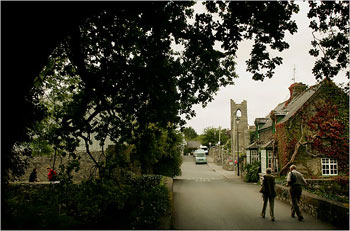You are hereplaces
places
14July1789. Fall of Bastille: tremendous debts, extravagant spending, widespread crop failures in 1788

(quote)
Jul 14 Bastille Day - the French Revolution begins with the fall of the Bastille Prison
Jul 14 Bastille Day - the French Revolution begins with the fall of the Bastille Prison, 1789
Parisian revolutionaries and mutinous troops storm and dismantle the Bastille, a royal fortress and prison that had come to symbolize the tyranny of the Bourbon monarchs. This dramatic action signaled the beginning of the French Revolution, a decade of political turmoil and terror in which King Louis XVI was overthrown and tens of thousands of people, including the king and his wife Marie-Antoinette, were executed.
Built in the 1300s during the Hundred Years’ War against the English, the Bastille was designed to protect the eastern entrance to the city of Paris.
The formidable stone building’s massive defenses included 100-foot-high walls and a wide moat, plus more than 80 regular soldiers and 30 Swiss mercenaries standing guard. As a prison, it held political dissidents (such as the writer and philosopher Voltaire), many of whom were locked away without a trial by order of the king.
Causes of the French Revolution
Despite inheriting tremendous debts from his predecessor, Louis XVI and Marie Antoinette continued to spend extravagantly, such as by helping the American colonies win their independence from the British. By the late 1780s, France’s government stood on the brink of economic disaster. read more »
Brilliant! Portugal clean-tech: world's biggest, £250m solar farm on abandoned land, less dependence on oil & gas

(quote)
5 June 2008
World's biggest solar farm at centre of Portugal's ambitious energy plan in country without oil or gas
From a distance the bizarre structures sprouting from the high Alentejo plain in eastern Portugal resemble a field of mechanical sunflowers. Each of the 2,520 giant solar panels is the size of a house and they are as technically sophisticated as a car. Their reflective heads tilt to the sky at a permanent 45 degrees as they track the sun through 240 degrees every day.
The world's largest solar photovoltaic farm, generating electricity straight from sunlight, is taking shape near Moura, a small town in a thinly populated and impoverished region which boasts the most sunshine per square metre a year in Europe.
When fully commissioned later this year, the £250m farm set on abandoned state-owned land will be twice the size of any other similar project in the world, covering an area nearly twice the size of London's Hyde park. It is expected to supply 45MW of electricity each year, enough to power 30,000 homes.
Portugal, without its own oil, coal or gas and with no expertise in nuclear power, is pitching to lead Europe's clean-tech revolution with some of the most ambitious targets and timetables for renewables. Its intention, the economics minister, Manuel Pinho, said, is to wean itself off oil and within a decade set up a low carbon economy in response to high oil prices and climate change.
"We have to reduce our dependence on oil and gas," said Pinho. "What seemed extravagant in 2004 when we decided to go for renewables now seems to have been a very good decision." read more »
Travel - "Discovering Old in New Ireland": cottages, sheep, Irish woman suddenly breaking into song
Original Source: New York Times
"Over the years, I have spent a lot of time in the western counties of Galway and Clare, and if nothing else, this is what I have gleaned: Ireland can be that place you missed as you traveled around Ireland, looking for Ireland.
Yes, you can find a thatched cottage here and there, if you try. Yes, you may even encounter a white clot of sheep blocking your rented car’s path, raising from musty memory some postcard caption about Irish Rush Hour. But to wander about, looking to bag with a digital camera some approximation of a time-faded Irish postcard, is to miss the complexities of a country that is thoroughly enjoying its wealth and adapting to its European Union membership while at the same time trying to preserve its dreamlike landscape and proud cultural heritage.
You may indeed hear a young Irish woman suddenly break into song in Kinvara. But you may also walk around the corner and be served dinner by a young man with an Eastern European accent instead of a brogue. Travel 10 miles up the road to Gort and you might wade into a celebration of Brazilian culture, staged by a transplanted community that is now an integral part of that old market town.
There you have it: delightful, post-millennial Ireland."
Images courtesy of New York Times




















